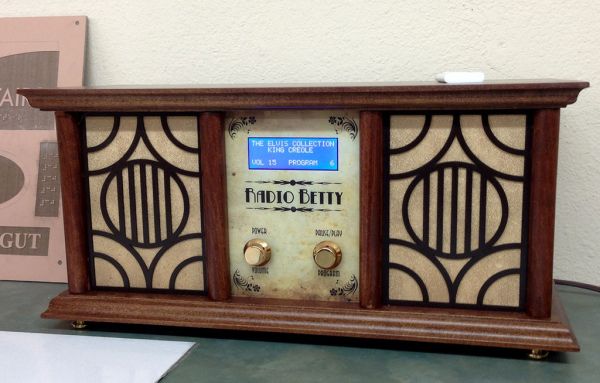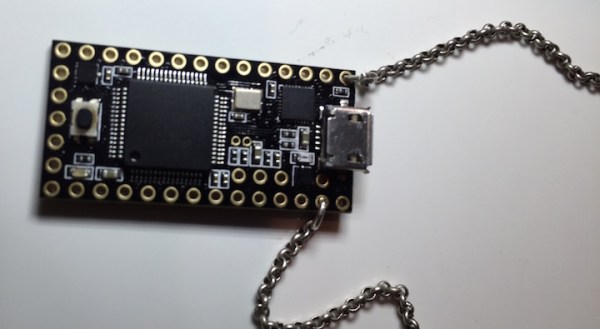No, this isn’t the first commercial MP3 player ever produced. It’s a blend of the old and the new, old time looks with modern electronics. [viscomjim] recently made this MP3 Player from the ground up for the noble reason to give as a Christmas present.
[viscomjim] started by laying out a circuit using a solder-less breadboard to test his circuitry. He’s using PIC microcontroller to control the unit. There is an 20×4 LCD display, two rotary encoders with push buttons, a serial MP3 player module, real time clock and an infrared receiver. A wires-all-over mess wasn’t acceptable for this Christmas gift so [viscomjim] put on his learning cap and tried out Autotrax Dex PCB layout software. This was his first project with the software and everything went well. After the design was done, the board files were sent out to a fab shop. A few weeks later they were delivered. All the parts were wired up and tested and… it worked!
Next up was building a cabinet, this one was built out of wood and stained to give it a feeling of yesteryear. A pair of 4″ car speakers are responsible for sharing the tunes and are powered by a small amplifier and power supply mounted inside the enclosure. The front panel is laser cut clear acrylic and backed with a nicely prepared Photoshop’d parchment paper graphic. And those fancy grill covers, also laser cut acrylic, this time opaque brown in color.
There are only two knobs for control, the left is the volume and the right is the program changer. Push the left knob inward and the unit turns on or off, the right plays and pauses. This MP3 player plays music off the internal SD card on the MP3 module. [viscomjim] also went one step further and implemented some code to work with an Apple remote he had kicking around, hence the IR receiver mentioned above.
If you’d be interested in making something similar, you’re have-way there as [viscomjim] made his schematics available but, unfortunately, not his code. Want to build your own MP3 Player but want something a little smaller? Check this tiny one out.

















